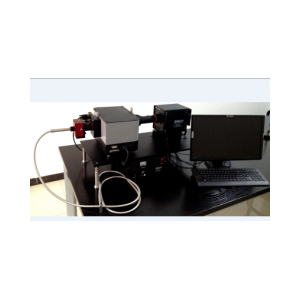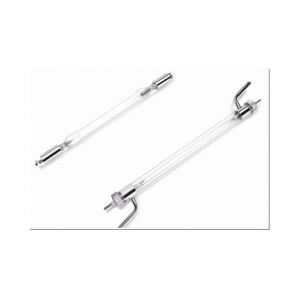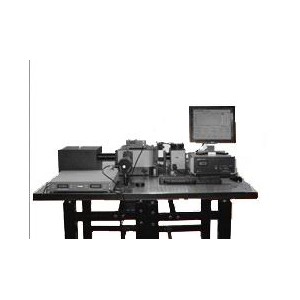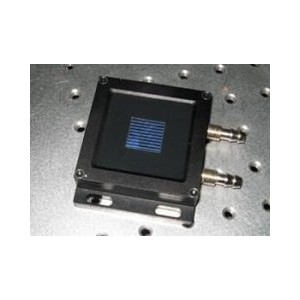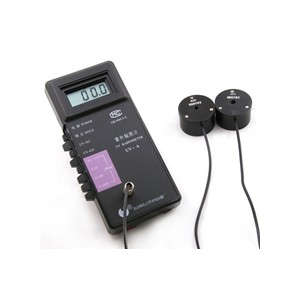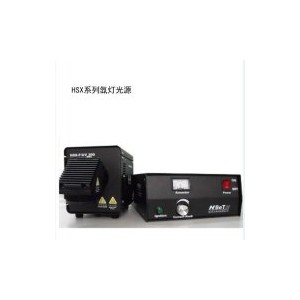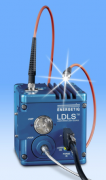
ENERGETIQ 激光驱动白光光源
ENERGETIQ 激光驱动白光光源—LDLS(Laser Driven Light Source)
关键词:激光驱动白光光源、光源、高亮度宽带光源/白光光源、、
激光驱动光源、光驱动白光光源 宽带光源、白光光源、宽带白光光源、激光光源、
Energetiq光源是一款高亮度,高稳定、长寿命宽谱光源,采用革命性的光源技术——LDLS™激光驱动光源技术,
使用连续激光直接加热氙离子至需要的温度,以产生高效的宽频谱光。波长范围从 170nm到2100nm 以上。
无电极的 LDLS 技术可以产生少量,高亮度的等离子体,以获取高效的光源,并且延长了灯的使用寿命。

Energetiq 公司开发的宽带白光光源,采用激光泵浦的方式维持等离子体放电发光,
避免了使用电极所带来的种种缺陷。首先通过高压放电点燃灯泡内的氙气,使氙气
温度升高电离变成等离子体,连续激光光束经过透镜聚焦进入灯泡,利用激光的能
量来维持灯泡内的等离子体,此时高压即可关闭,采用聚焦良好的激光来维持等离子体,
可以使紫外光激发稳定而且易于聚焦。LDLS的等离子体被束缚在一个很小的球状区域内,
密度大大增加,发光亮度也大幅度提高;由于LDLS等离子体中心位置高度稳定,空间稳定
性也变得很好。这种接近于点光源的设计使LDLS 在较长距离都有很好的准直性。此外LDLS
等离子体不与电极直接接触,电极并未受到侵蚀,增加了使用寿命。
|
EQ-99FC LDLS™System |
EQ-99 LDLS™System |
EQ-1500 LDLS™System |
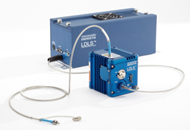
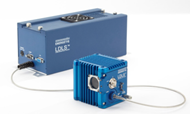
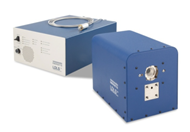
|
Compact LDLS with fiber-couples output |
Compact LDLS for free-space optics |
High brightness LDLS for free-space optics |
宽光谱输出
l 170nm~2100nm,一个光源满足各种常用需求高亮度
l 输出强度是75W Xe灯的10倍、30W氘灯的100倍以上
高稳定性
l 可比拟激光器的功率稳定性和空间稳定性
超长寿命
l 无电极工作,单个灯泡寿命9000个小时,更低维护成本
更高的耦合效率
l 光斑尺寸《100um,并提供光纤以及自由光输出选项
型号参数:
|
产 品 型 号 |
EQ-99X |
EQ-99XFC |
EQ-1500 |
|
光 波 范 围 |
170-2100nm |
170-2100nm |
170-2100nm |
|
输 出 功 率 |
0.5W |
0.3W |
1.5W |
|
数 值 孔 径 |
Up to 0.47 |
0.22 |
Up to 0.5 |
|
光 源 寿 命 |
约10000 hrs |
约10000 hrs |
约10000 hrs |
|
同 步 输 出 |
自由空间 |
SMA连接器,光纤耦合宽带光输出 |
灵活的光学界面,自由空间或者光纤接口, |
|
光 源 重 量 |
0.7kg |
0.7kg |
5kg |
|
光 源 尺 寸 |
82.3×85.7×76.2mm |
82.3×85.7×76.2mm |
160×142.2×218.4 mm |
|
应用 |
紫外-可见光光谱定法,光纤测试,高性能光谱学,高端成像,高性能液体色(HPLC),显微镜照明,环境分析和监测,材料表征和测试,气相测量,过程质量监测,长寿命灯的应用需求 |
||
Comparing LDLS with Traditional Lamps
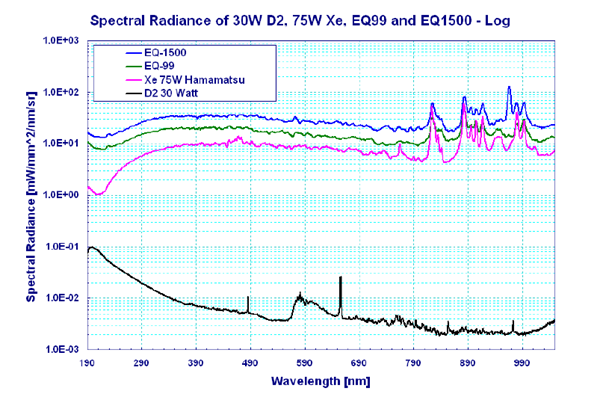
Laser Driven Light Source:Principle of Operation
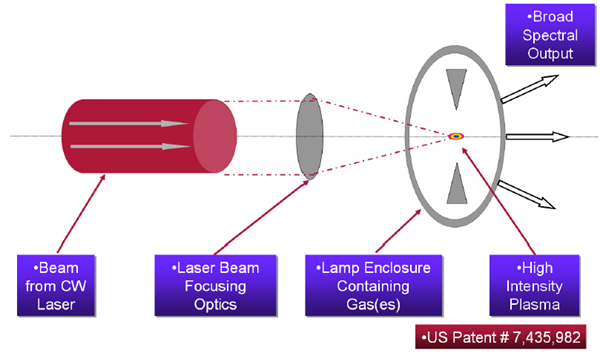
LDLSTM:Stable & Long-life
稳定性和寿命测试:
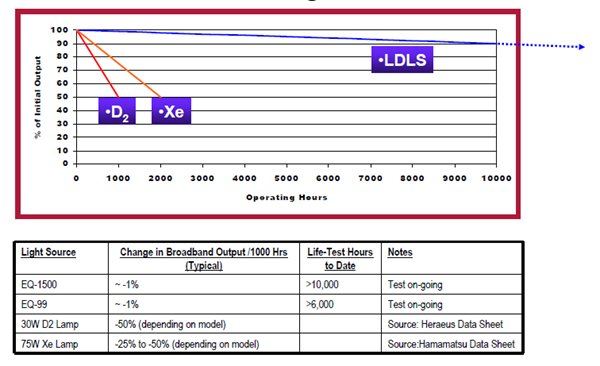
Spatial Stability Results
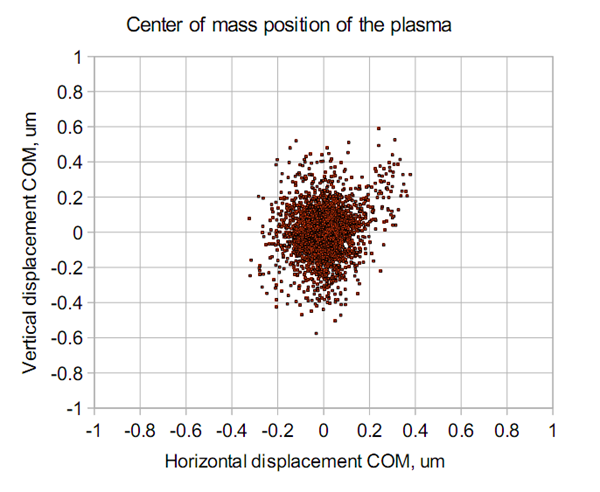
–Horizontal: 0.145 μm
–Vertical: 0.094 μm
应用领域
l UV-VIS-NIR光谱
l 单色仪光源
l PEEM(光电发射电子显微镜)
l 原子吸收光谱
l 材料表征
l 环境分析
l 高光谱成像
l 气相测试
l 显微成像
EQ99光斑影像数据
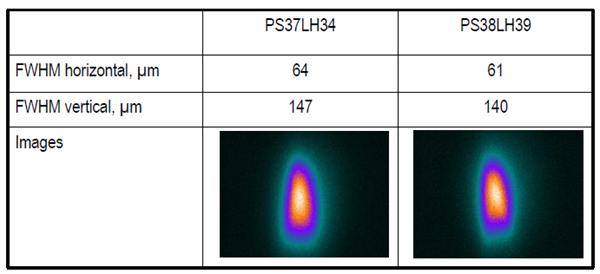
标准附件
LDLS Fiber Optic Assemblies
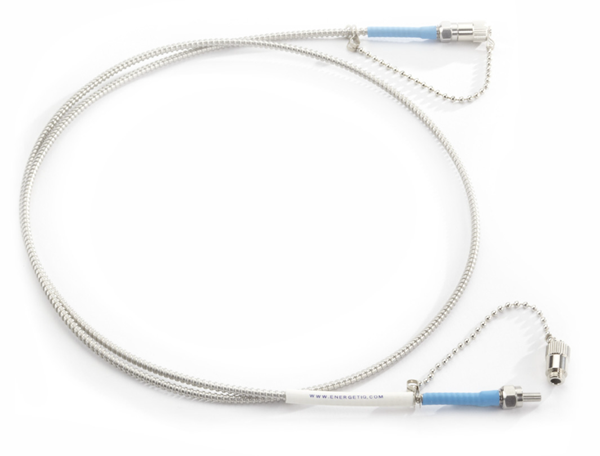
光纤
l 特殊设计光纤接头,实现无缝链接。
光纤准直器
l 双光束尺寸:6.7mm和11mm
标准光源
l 满足NPL辐照度校准,校准波长200nm-800nm
l 温度控制灯室用于高稳定测试
耦合附件
l 离轴抛面反射镜组(OAP),多种焦距和NA数选择
l 自由光和聚焦光输出
Frequently Asked Questions (FAQs)
If you have a question about Energetiq’s world renowned Laser Driven Light Sources
that we haven't answered here, feel free to contact us via email at info@bjnbet.com
LDLS™ Performance
1. What is the spectral range of LDLS?
The EQ-99X and EQ-77 covers the range from 170 nm to 2400 nm. Whereas the EQ-99XFC covers
the range from 190nm to 2400nm. This range is limited by the high purity synthetic quartz of the bulb and
output window.
• The spectral radiance (brightness) of the LDLS exceeds that of traditional Xe and Deuterium sources
across the UV-Vis-NIR spectral range as shown in Figure 1.
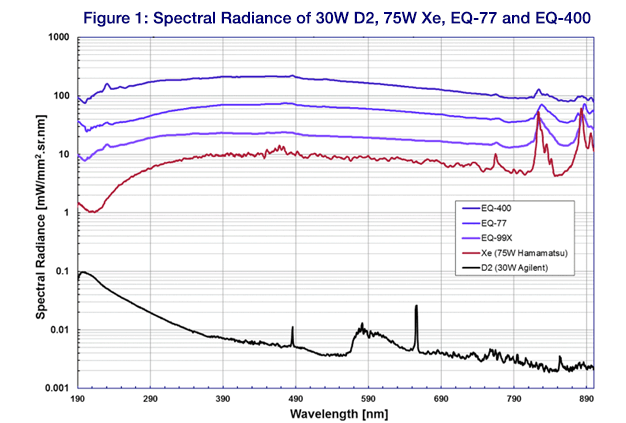
•The spectral radiance (brightness) of the LDLS exceeds that of traditional Tungsten sources across the
UV-Vis-NIR spectral range as shown in figure 2.
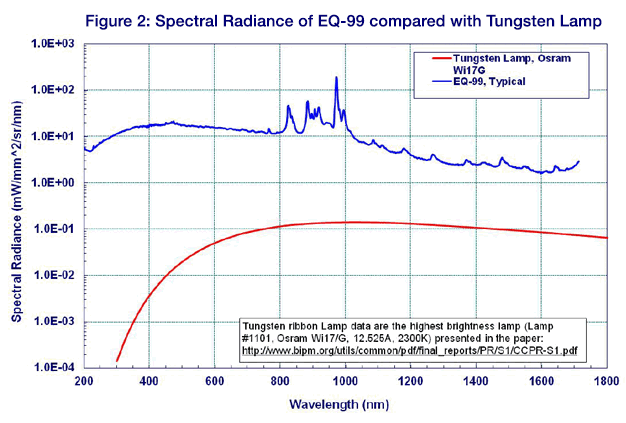
2. How much total optical power and brightness does the LDLS deliver?
LDLS sources are optimized for high brightness, rather than high power. The LDLS power is
radiated from a very small plasma spot, in the range of 100 um in size, and this provides a high
brightness (spectral radiance - mwatts/nm/mm²/sr), but modest power (watts). As a guide,
the outputs of the LDLS sources are as follows.
• Typically, the EQ-99X delivers spectral radiance (brightness) of about 10 mwatts/nm/mm²/sr
(depending on wavelength) and total power of approximately 0.5 watts, broadband measured with a thermopile.
• Typically, the EQ-77 delivers spectral radiance (brightness) of about 40 mwatts/nm/mm²/sr
(depending on wavelength) and total power of approximately 2.0 watts, broadband measured with a thermopile.
Fiber Coupling
3. What is the fiber connection of the EQ-99XFC and the EQ-99FC?
The EQ-99XFC system has an FC connection. A standard FC connector will interface with the
EQ-99XFC lamp house. It is strongly recommended to use the high-performance, output fiber
assembly provided by Energetiq with the EQ-99XFC. The output fiber assemblies are available
in FC to SMA terminations and FC to FC terminations in a variety of fiber core sizes.
The EQ-99FC system has an SMA, threaded female connection. A standard SMA 905 connector
will interface with the EQ-99FC lamp house. If another type connector is needed, typically a fiber
patch cable with SMA on one side and the desired connection on the other can be used.
High-performance, solarization resistant SMA 905 terminated cables are available from Energetiq.
4. How much power is delivered by the EQ-99XFC?
This depends on the chosen optical fiber size, the transmission characteristics of the particular fiber and
wavelength of interest. Typical output power is;
• 600 um core fiber, 0.22NA; ~200 mwatts (broadband)
• 455 um core fiber; 0.22NA; ~150 mwatts (broadband)
• 230 um core fiber, 0.22NA; ~70 mwatts (broadband)
• 115 um core fiber, 0.22NA; ~25 mwatts (broadband)
• 50 um core fiber,0.22NA; ~5 mwatts (broadband)
• 9 um core single mode fiber; ~40 μwatts (broadband)
5. How much spectral power is delivered by the EQ-99XFC?
This depends on the chosen optical fiber, wavelength range and the fiber characteristics.
Typical performance with a 230µm diameter, 0.22NA fiber is shown in the chart below;
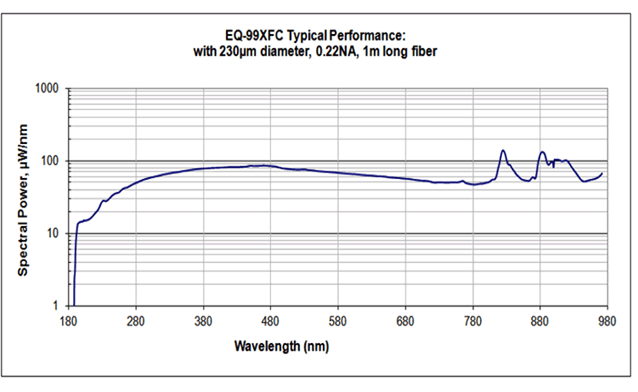
For larger fiber diameters, the spectral power values from the chart can be multiplied by the following
factors: 230µm multiply by 1; 450µm multiply by ~2; 600µm multiply by ~2.25.
6. For the EQ-99X and EQ-99XFC, is there a limit on the laser fiber length
between the power supply and the lamp house?
The standard fiber length is 1 meter. Currently, a longer fiber is not available.
7. Is there a limit on the output fiber length from the lamp house to the application?
Energetiq offers high performance, solarization resistant output fibers in a choice of diameters,
and a choice of 1 meter and 2 meter lengths. Since even the best optical fibers absorb light in
the deep UV, it is recommended to use the shortest fiber length possible to maximize the potential of the LDLS.
Stability
8. What is the spatial stability of the plasma in the LDLS?
The position of the plasma is very precisely positioned in space by the focal point of the drive laser.
The standard deviation of the plasma light intensity 'center of mass' position is less than 0.5 um in the x,
y or z position. This is measured capturing 2500 images at 200 frames per second.
9. What is the long term drift of the LDLS?
Long Term Stability (Drift): This is dominated by the Lamp House Temperature Coefficient, which is
approximately 0.3%/deg C. This temperature coefficient will dominate any other system drift in the timescale of hours..
Energetiq recommends a warm-up time of approximately 30 minutes before making measurements,
to ensure that the LDLS system has reached thermal equilibrium. The actual warm-up time for a particular
application may be longer or shorter depending on the precision of measurements to be made.
Lifetime
10. How does the output power change as the bulb ages?
The broadband output power reduces over time at approximately 1%-2% per 1000 hours of bulb life.
11. How long is the bulb life?
• The typical bulb life of the EQ-99 X-Series and EQ-99 Series is greater than 9,000 hours.
• The typical bulb life of the EQ-77 is greater than 9,000 hours.
LDLS Technology
12. How much laser power is used to drive the LDLS?
• The EQ-99X and EQ-99XFC use a laser diode module with a total power of about 20 watts.
• The EQ-77 uses a laser diode module with a total power of about 50 watts.
13. What laser wavelength is used in the LDLS Products?
• The LDLS products use laser diode modules with wavelength of approximately 1μm
14. What is the difference between the EQ-99 Series
LDLS and the EQ-99 X-Series LDLS?
The EQ-99 X-Series uses the same technology as the EQ-99 Series; however the X-Series
offers ultraclean construction for greater long-term stability and longer operating life.
• The EQ-99X-FC features Fiber Protection Technology to improve long-term deep ultraviolet
output by an order of magnitude, as well as an FC connector on the lamphouse for improved
repeatability in fiber connection.
• The X-series product line includes the EQ-99X and the EQ-99XFC.
Optical Considerations
15. What is the plasma size of the LDLS?
• The EQ-99X has a FWHM (Full Width-Half Maximum) plasma size of typically 60 μm x 140 μm
• The EQ-77 has a FWHM (Full Width-Half Maximum) plasma size of typically 135 μm x 320 μm
16. What is the output beam configuration of the LDLS?
• The EQ-99X is a point source system with a diverging beam with a Numerical Aperture (NA)
of 0.47 for coupling of free space-optics.
• The EQ-77 is a point source system with a diverging beam with a Numerical Aperture (NA) of 0.5 for
coupling of free-space optics.
• Both the EQ-99X and EQ-77 are available with coupling optic accessories based on OAPs (Off- Axis Parabolic)
Mirrors which can deliver the light into, for example, the slits of a monochromator or spectrometer.
• Choices of focal length are available for these coupling accessories in order to make the most efficient
optical coupling from the LDLS to the application.
• The EQ-99XFC has a fiber coupled output with NA of 0.22
17. What OAP configuration is needed for coupling the
LDLS into a spectrometer or monochromator?
The EQ-99X and EQ-77 have four different OAP options. Please note that the Numerical Aperture (NA) of the
OAP assembly should be slightly less than the entrance NA of the monochromator or spectrometer. Whereas
the f/# of the OAP assembly should be slightly larger than the f/# of the entrance to the system, to allow for
efficient coupling into the system.
• Use the chart below to match the entrance f/# or NA of your system with the appropriate OAP Mirror Assembly.
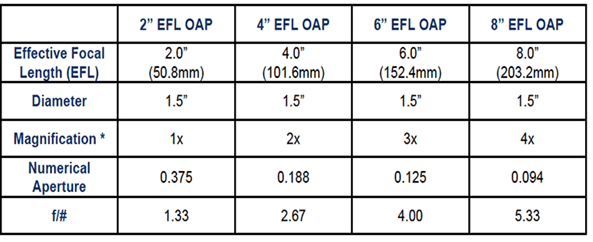
• Magnification is based on an OAP pair with 2” EFL OAP as the collecting mirror and
the second OAP (listed above) as the focusing mirror.
Set-up
18. What is the EQ-99X lamp house temperature?
In normal operation in a typical lab, the EQ-99X and EQ-99XFC lamp houses reach about 55
degrees Celsius. The particular temperature of the lamp house depends on how and where the
lamp house is mounted: in a warm lab or in an enclosure the lamp house will be hotter. Mounting
the EQ-99 on an optical table, where the metal table acts to some extent as a heat sink, will cause
the lamp house to run at a lower temperature than the equivalent temperature when mounted in free-air.
19. When do I need to purge the LDLS with dry nitrogen?
LDLS products produce significant amounts of deep UV light. Light below 200 nm produces ozone in the presence
of oxygen, and the ozone produced has an absorption band in the 240-270 nm range. To use light from the LDLS in
the 170 to 270 nm range, the system should be purged with clean dry nitrogen. Purging with dry nitrogen also reduced
the possibility of photo-contamination of the bulb from trace organic vapors present in room air.
20. What pressure is needed for the dry nitrogen purge?
For nitrogen purging grade 6 or better gas purity is recommended to maintain cleanliness of the optics,
and gas should be filtered to <5um. Supply pressure should be 20psig (0.14 MPa). With a 20 psig inlet
pressure, the EQ-99X and EQ-99 will consume approximately 1 slm of flow. There is no return fitting for
the purge nitrogen. The purge flow normally escapes within the lamp house enclosure, and then to the atmosphere.
21. Can you purge with other gases besides nitrogen?
• No, only clean, dry nitrogen can be used to purge the LDLS systems.
22. Can you put a vacuum on the lamp house instead of purging with nitrogen?
• No. The LDLS systems will not hold vacuum and connecting to a vacuum may cause damage to the optics.
23. What is the LDLS warm-up time?
Energetiq recommends a warm up time of approximately 30 minutes before making measurements, to ensure that the
LDLS system has reached thermal equilibrium. The actual warm-up time for a particular application may be longer or
shorter depending on the precision of measurements to be made.
24. What is the proper orientation of the EQ-99X or EQ-99XFC lamp house?
• The EQ-99X and EQ-99XFC lamp house should only be mounted so that the label that contains the
serial number is facing downward.
• This is particularly important for the EQ-99XFC which must be mounted with the output fiber optic
connection on top (serial number on the bottom). The plasma moves slightly depending on gravity
and the precision ellipsoidal coupling optic in the EQ-99XFC is adjusted at the factory to optimize
output in that particular orientation.
• The EQ-99X and EQ-99XFC exhibit the highest spatial and temporal stability when mounted in the
recommended orientation.
25. Can the LDLS lamp houses be mounted in other orientations?
• We strongly recommend that the EQ-99X, EQ-99, EQ-99XFC, EQ-99FC & EQ-77 only be mounted
in the recommended orientation.
• If for optical reasons it would be desirable to have the optical output in a different orientation, please
contact the Energetiq Applications Team to discuss ways that this might be achieved.
Note
Performance measures mentioned in this list of Frequently Asked Questions are typical values
for guidance in the selection and use of LDLS products. They are not to be taken as specifications.
Please contact Energetiq for further details: info@bjnbet.com



